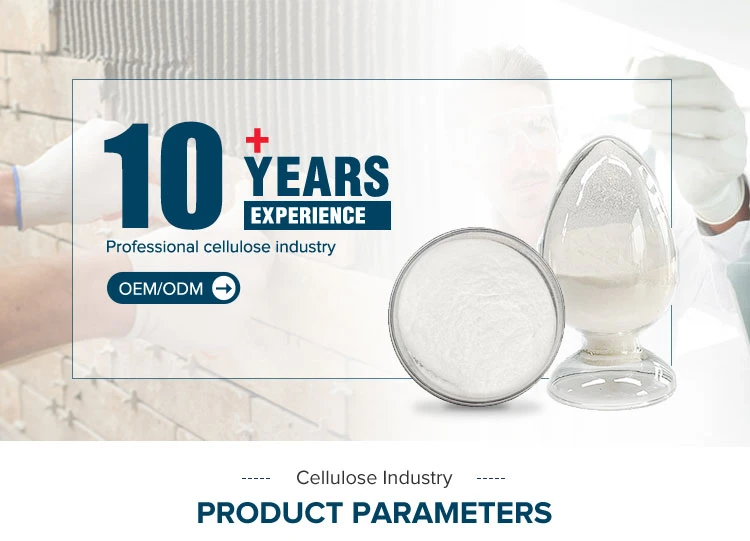Exploring HPMC The Versatility of Hydroxypropyl Methylcellulose
Hydroxypropyl Methylcellulose (HPMC) is an essential cellulose derivative widely used across various industries, particularly in pharmaceuticals, food, and construction. Its unique properties make it an invaluable ingredient, enabling the formulation of products with enhanced performance and stability. In this article, we will explore the characteristics, applications, and benefits of HPMC, shedding light on its significance in modern formulations.
What is HPMC?
HPMC is a non-ionic polymer derived from cellulose, a natural polymer found in the cell walls of plants. It is produced through a series of chemical reactions involving the etherification of cellulose. The resulting product is a white, odorless powder that is soluble in water and forms viscous solutions. The degree of substitution of hydroxypropyl and methyl groups on the cellulose backbone influences its solubility, viscosity, and other functional properties.
Properties of HPMC
One of the primary features of HPMC is its ability to form gels and films, making it an excellent thickening, stabilizing, and emulsifying agent. It is known for its high water retention capacity, which makes it useful in maintaining moisture in formulations. Additionally, HPMC is resistant to heat and acidic conditions, providing stability to drugs in pharmaceutical applications. Another vital characteristic is its non-toxic nature, which allows it to be safely used in food products, pharmaceuticals, and cosmetics.
HPMC also exhibits rheological properties that can be manipulated by adjusting its concentration. This versatility allows formulators to tailor product viscosity to meet specific application requirements, whether in plaster, glue, or food products.
Applications of HPMC
1. Pharmaceuticals In the pharmaceutical industry, HPMC is commonly employed as a binder in tablet formulations due to its ability to form strong, cohesive structures. It is also used as a controlling agent in controlled-release drug delivery systems, ensuring a steady release of active ingredients over time. Additionally, HPMC serves as an excipient in suspensions and emulsions, enhancing product stability and bioavailability.
hpmc cellulose hydroxypropyl methyl

2. Food Industry HPMC is utilized in the food sector as a thickener and stabilizer. It is often found in sauces, salad dressings, and ice creams, where it maintains texture and improves mouthfeel. Due to its emulsifying properties, HPMC is also used in low-fat food formulations to improve consistency without adding calories.
3. Construction In the construction industry, HPMC plays a significant role as an additive in cement-based materials. It improves workability, water retention, and adhesion of mortars and plasters. The modified properties allow for easier application and better performance of construction materials in various environmental conditions.
4. Personal Care Products HPMC is featured in many personal care and cosmetic products due to its film-forming and thickening abilities. It can be found in shampoos, conditioners, creams, and lotions, providing a smooth texture while enhancing the stability and shelf life of the products.
Benefits of Using HPMC
The use of HPMC in formulations brings numerous advantages. It provides enhanced texture and mouthfeel in food products, ensuring consumer satisfaction. In pharmaceuticals, its role as a binder and release control agent leads to improved drug efficacy and patient compliance. For construction materials, HPMC contributes to durability and ease of use, resulting in superior performance of structures.
Moreover, HPMC's non-toxic and biodegradable nature aligns with the growing demand for sustainable and eco-friendly products. Its safety in food and pharmaceutical applications ensures that consumers can use products containing HPMC with confidence.
Conclusion
Hydroxypropyl Methylcellulose is a multifunctional ingredient that has carved a niche for itself across diverse industries. Its remarkable properties, such as water retention, viscosity modulation, and film-forming ability, make it an asset in the formulation of effective and stable products. As industries continue to evolve, the versatility and benefits of HPMC will undoubtedly secure its role as a vital component in various applications, driving innovation and improving product performance. Whether in pharmaceuticals, food, construction, or personal care, HPMC stands out as a testament to the power of cellulose derivatives in enhancing the quality and efficiency of modern formulations.
-
Rdp Powder: Key Considerations for Wholesalers in the Building Materials IndustryNewsJul.08,2025
-
Key Considerations for Wholesalers: Navigating the World of Hpmc - Based ProductsNewsJul.08,2025
-
Hpmc Detergent: Key Considerations for WholesalersNewsJul.08,2025
-
Key Considerations for Wholesalers: China Hpmc For Tile Adhesive, Coating Additives, Concrete Additives, and MoreNewsJul.08,2025
-
Crucial Considerations for Wholesalers: Navigating the World of Construction MaterialsNewsJul.08,2025
-
Key Considerations for Wholesalers Sourcing Additive For Cement, Additive For Concrete, Additive For Putty from Additive Manufacturer Shijiazhuang Gaocheng District Yongfeng Cellulose Co., Ltd.NewsJul.08,2025




